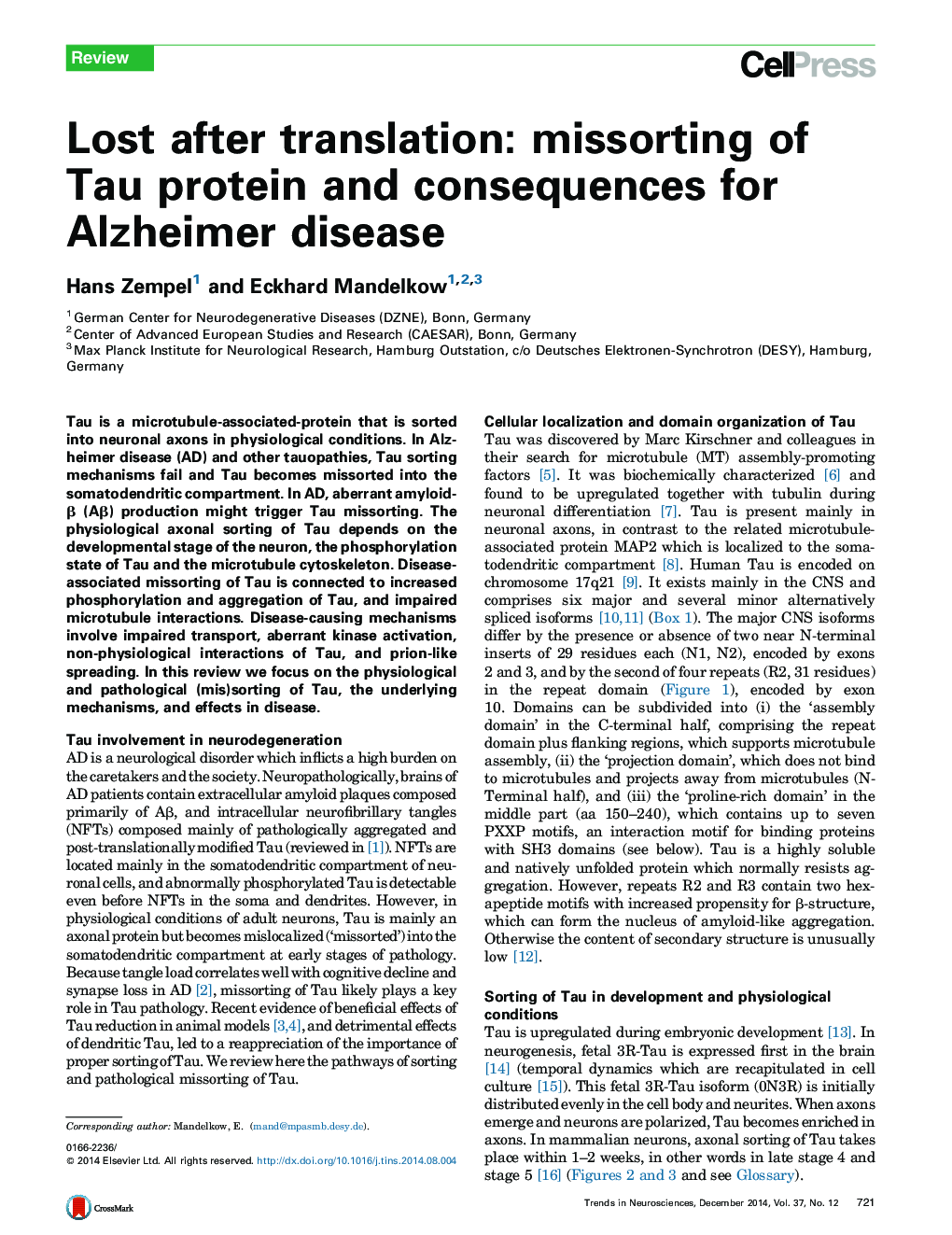| Article ID | Journal | Published Year | Pages | File Type |
|---|---|---|---|---|
| 4354220 | Trends in Neurosciences | 2014 | 12 Pages |
•Somatodendritic missorting of Tau is an early key event in Alzheimer disease.•Missorting of Tau in neurons can be induced by cell stress (Aβ, glutamate, etc.).•Tau missorting causes microtubule severing by spastin, traffic jams, and synapse loss.•Tau-based therapy is promising because Tau pathology is reversible in disease models.
Tau is a microtubule-associated-protein that is sorted into neuronal axons in physiological conditions. In Alzheimer disease (AD) and other tauopathies, Tau sorting mechanisms fail and Tau becomes missorted into the somatodendritic compartment. In AD, aberrant amyloid-β (Aβ) production might trigger Tau missorting. The physiological axonal sorting of Tau depends on the developmental stage of the neuron, the phosphorylation state of Tau and the microtubule cytoskeleton. Disease-associated missorting of Tau is connected to increased phosphorylation and aggregation of Tau, and impaired microtubule interactions. Disease-causing mechanisms involve impaired transport, aberrant kinase activation, non-physiological interactions of Tau, and prion-like spreading. In this review we focus on the physiological and pathological (mis)sorting of Tau, the underlying mechanisms, and effects in disease.
